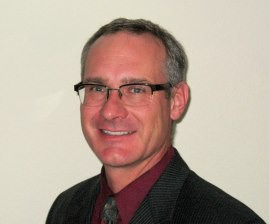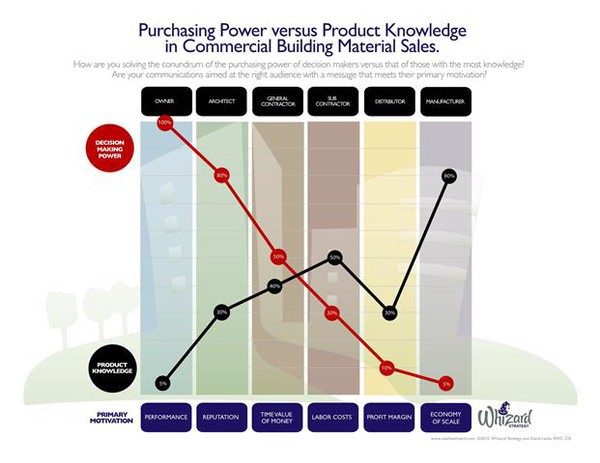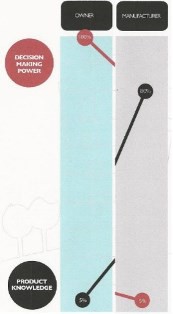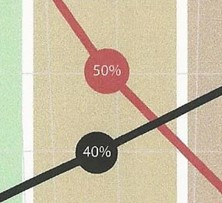Is it Just Me, Or Does Every Building Leak?

David Leslie, RWC, CSI
Building Weather Barrier System Consultant
Building Exterior Solutions, LLC
It was August and I had just finished presenting “Design, Material & Installation; The Three Facets for an Integrated Weather Barrier” at the Austin Chapter of the Building Enclosure Council (BEC), when I was asked to write this article. My goal has always been to positively change our industry and to give insight into why buildings leak. Anyone who knows me or has seen me present knows that I am very passionate about the building envelope industry and believe to my core that there is no good reason why a building should leak. The audience’s reaction was overwhelmingly positive; there was an enthusiastic understanding which prompted the request to write this article. However, something different happened after the presentation and it became the impetus for this article; I was asked a very poignant question, “How do we change the industry?”

Buildings that have environmental intrusions (air, thermal, and water leaks) are the number one cause for unusable occupied space for building owners. In my research, I discovered 90% of litigation with architects involve leaks in a building. Additionally, the number one problem for general contractors in closing out a project involve building leaks, and is the primary reason for specialty subcontractors being called back. Consequently, the greatest source of liability for building weather barrier system manufacturers is, again, leaks in the building. Buildings that leak are a big problem and it is getting worse as technological advances increase the complexity of designing and constructing buildings. The fact that the issue continues to grow is the reason that organizations like the American Institute of Architects (AIA) have started the Building Enclosure Council, the reason RCI, Inc. has developed a Registered Building Envelope Consultant classification, and the reason continuous air and weather barriers and other building envelope ASTM standards are being written into all of the building codes. The need for these new designations is a clear indication that many people are asking that same question: “How do we change the industry?”
The person who asked that pivotal question at the Austin BEC was John Posenecker of Chamberlin Roofing & Waterproofing in Austin. We have been friends for years and frequently discuss how to improve our industry. But his query hit close to home for me because it begs the question: What good is a consultant if they tell you what the problem is, but don’t tell you how to fix it?
In the presentation I defined five primary objectives that establish a process of creating an integrated weather barrier (i.e. buildings that don’t leak); however, these processes don’t have the breadth or width to impact the industry as a whole because they are simply tasks. In order to change the industry, there has to be a universal vision and relevant and consistent messaging to effectively communicate that vision that leak-free buildings are attainable and it has to be relevant to the stake-holders involved in constructing buildings. What is most interesting is that the very thing needed to focus the vision, and therefore define the message, is actually in the presentation itself and is captured in the Purchasing Power vs. Product Knowledge graphic (Fig. 1). This simple graphic is a powerful tool that creates insights into the dynamic workings of our industry’s purchasing chain, and into the mechanisms of how buildings are constructed.
If you have read my bio, you know that I have 25 years in the roofing and waterproofing industry and have been blessed with a wide array of life experiences. But what you may not know is that in college I majored in baseball. Being an athlete teaches us many fantastic things, but a lesson that has served me well beyond sports is that having good fundamentals are key to reaching maximum performance; and understanding those fundamentals is critical to knowing how to improve. Before we can develop a vision and, ultimately, the messaging to change the industry, we must first agree upon the fundamentals for constructing buildings that perform as intended. The following are the universal fundamentals that I believe are key to achieving those results:
- Amazingly enough, it is frequently overlooked that the primary reason to construct a building is to provide shelter for human activity. Oftentimes during construction, grave mistakes are made related to the building’s weather barrier systems when this concept is forgotten. The building’s primary purpose is to keep the outside environment out and the inside environment in.
- Because the building’s primary purpose is to be shelter, it has to be viewed as a whole and not just a sum of the parts. The reality is that 90% of all environmental intrusion occurs in less than 1% of the building surface. That 1% area is the terminations, penetrations and transitions for the weather barrier systems. This basically means that leaks occur where one weather barrier system stops and another one begins. For any building to perform as intended and to be leak-free, all of the weather barrier systems have to function together to create an integrated weather barrier.
- Creating an integrated weather barrier does not happen by chance, it has to be guided. Regardless of what is being constructed, there are three facets to the process: design (the prescribed plans for moving an idea from vision to tangible), material (the physical products chosen to move the vision from tangible to reality), and installation (the process of assembling the materials to bring the vision to fruition). These components are intimately intertwined, inseparable, and interdependent. A flaw with any one of them can result in poor performance, and a flaw in all three will cause significant failure. Design, material, and installation is a prism, and through this lens we can project an image of how to construct buildings that are leak-free and view ways to correct existing buildings that are not.
The question then becomes, if we know these fundamentals, then why do buildings leak and how do they relate to the Purchasing Power vs. Product Knowledge graphic? To better understand how the graphic functions and relates to the three fundamentals, it is helpful to know why the graphic was developed. Some years ago while working as the Technical Services Manager for a building weather barrier material manufacturer, I was performing a training class for some newly hired employees.
![]()
During the class I posed the question: “Who is our customer?” Someone in the class responded, “The contractor.” My reply was, “That answer is the very reason that our industry has a poor reputation and why buildings leak.” Ultimately, the customer for everyone involved in constructing buildings is the building owner. To illustrate the concept I wrote on the white board what I called the “Purchasing Chain.” (Fig. 2)
However, what is even more telling is that the purchasing chain also reflects the sequence for actually constructing the building and conclusively, this is where the three fundamentals become relevant. The general chronological process of actual construction is: Owner hires an architect to design a building; the architect’s design documents are issued for bid from general contractors; the general contractor then selects specialty contractors who purchase the weather barrier manufacturer’s products from a distributor. When this sequence is viewed in the relationship to the Purchasing Power vs. Product Knowledge graphic (Fig 1), we realize that the reverse relationship with power and knowledge carries throughout the entire graphic.

Because design, material, and installation is intertwined, inseparable, and interdependent for constructing leak-free buildings, the fact that an architect is designing a building with only 30% product knowledge creates significant opportunity for flaws in the weather barrier systems for the entire duration of the product. Regardless of where one falls in the chain, it is easy to forget that the person everyone is working for is the building owner who sits at the top of chain. This is an especially difficult reality for groups to the right of the general contractor because they virtually never have direct dealings with the owner. I then expanded the concept by plotting the points for the Purchasing Power and Product Knowledge graph (Fig. 1), and the stark realization that the person with the most power has the least knowledge, and the person with the most knowledge has the least power. (Fig. 3)
This is not to say that all issues belong to the architect, nothing could be farther from the truth, because there is no possible way for them to know all the available weather barrier products for the building envelope, and the architect is not actually installing the products. Due to this reality, many of the critical details of the termination, penetrations and transitions (where 90% of all leaks occur) are deferred to the General Contractor via shop drawings from the Specialty Subcontractor and during actual construction. There was an era when this process was practical because the General Contractor had many of the Specialty Subcontractors in-house and everyone involved understood that they were constructing the building as a whole. With the purpose of optimizing production by everyone becoming a specialist, the current business model is for the General Contractor to function as a project administrator and utilize Specialty Subcontractors who have a very narrow focus of a single discipline, such as roofing.

Unfortunately, specialization, the very thing that has helped us advance as a society, has become a hindrance to constructing buildings that don’t leak. Few people know how to install terminations, penetrations and transitions properly; fewer manufacturers make all of the products for them so that they are compatible; even fewer people know how to design them so they don’t leak; and virtually no one takes responsibility for them.
Because of this fact, the vast majority of the time the final decisions for how the building is constructed falls on the shoulders of the General Contractor who has 50% of the Purchase Power and 40% of Product Knowledge. (Fig. 4)
Ultimately, due to the process of constructing buildings, oftentimes the primary reason we are building it in the first place gets lost and we wonder why virtually all buildings leak.
Credit for professional appearance of the Purchasing Power vs. Product Knowledge goes to a friend, Mark Mitchell, and his talented graphics department at Whizard Strategy (www.seethewhizard.com). Mark used my graphic as the centerpiece for a chapter in his book Building Material Channel Marketing and illustrates how the Purchase Power vs. Product Knowledge can help guide your marketing to be more effective. However, the same core principle found in the primary motivation of the graphic that makes product placement messaging effective, is also applicable to that messaging for positively changing our industry. (Fig. 5)

For true change to be accepted and sustainable it has to be beneficial to all of the stake-holders; but even more important, it has to be practical for everyone. An integrated weather barrier producing a leak-free building obviously would be beneficial for everyone, but if the process does not provide value for any one stake-holder, it will not be followed. Regardless of who you are, value is only created by a combination of three things: wants, needs and budget. When I say there is no good reason for buildings to leak, I mean exactly that, no GOOD reason. The designs, materials and installation processes all currently exist to produce an Integrated Weather Barrier and would not require any additional cost. Sadly, as I stated before, the current process of constructing is not conducive to making buildings that don’t leak.
Unfortunately, the wholesale process of constructing buildings that don’t leak does not exist and I don’t know exactly what it is going to look like, but it will require a paradigm shift with all of the stake-holders participating. As I get closer to bringing it to reality, I will let you know. However, in the meantime, the industry is not doomed to producing leaky buildings. The work-around is to have a dedicated person working outside of the current process, functioning as the integrator from the very inception of the building until fruition. So, this article is not totally altruistic because the integrator is a consultant (e.g. David Leslie of BES), but frankly any one of the stake-holders could step up to the role of integrator. How do we change the industry? Honestly, we just have to remember that we construct buildings to keep the outside out and the inside in. Just as there needs to be a vision to bring the weather barrier components to work as a single unit, so there needs to be a vision to unify the stake-holders to construct the building as a whole.
Mr. Leslie’s experiences has involved every aspect of the roofing and waterproofing industries for the past 25 years, creating a unique perspective and awareness to the design, material and installation of building envelope systems. These experiences include building envelope consulting (new and restoration projects), four patent applications for building envelope systems and products, the development and production of building envelope products for various manufacturers, and as project superintendent of the installation for major roofing and waterproofing projects nationwide. He focuses on positively changing the Building Envelope industry today and into the future by providing clients with a sustainable Integrated Weather Barrier. You can reach David at dleslie@besgrp.com or 469-449-3393.
Subscribe Today!
Stay-in-the-know and subscribe to our blog today!